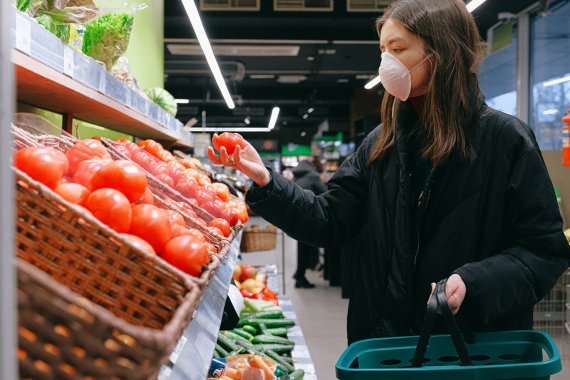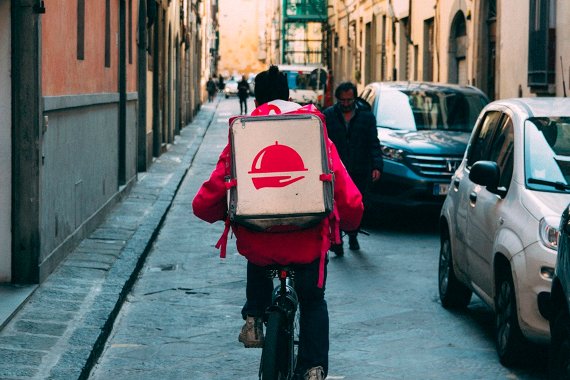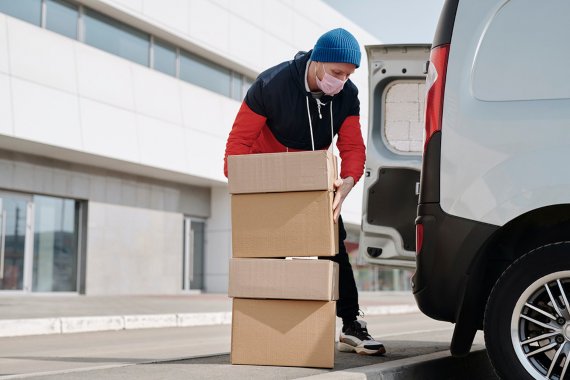We live in strange times. After a confinement in which daily routines changed radically and possible options were greatly limited, people are now recovering a certain normality in which they are once again faced with decisions about their life and consumption habits, and how these can promote the sustainability of the planet. For those who prioritise reducing their carbon footprint, shopping online or in person is a dilemma that has been evolving in recent years. A new study aims to settle the debate by shifting the focus of research in this field.
Common sense tells us that the home delivery route is less damaging to the environment than multiple customer trips to the shops, whether by public transport or in their own vehicle. In fact, most analyses to date have suggested that online shopping tends to generate fewer carbon dioxide (CO2) emissions, as a study by MIT’s Center for Transportation and Logistics concluded in 2013. That team found a lower environmental impact in the distribution systems of the large U.S. online stores, thanks to their control over the efficiency of the entire distribution chain. However, a journalistic investigation published in 2019 contradicts “these theoretical benefits,” claiming that in practice they are offset by factors such as returns and various delivery attempts.
Faced with these contradictory results, a joint study published by British and Dutch researchers has introduced an innovative method to quantify the probability of a multitude of possible individual cases. They have reached a conclusion about the greenest option: physical stores with home delivery generate the lowest carbon footprint, in most cases.

Speaking to OpenMind, Sadegh Shamohammadi, lead researcher of the new study, stresses that they “tried to find and use real data from national statistics, industry and scientific literature,” so that the conclusions are realistic and can be applied in practice.
Simulating and quantifying all possibilities
The researchers obtained this result after focusing on the sale of personal and household cleaning and grooming products, which are considered low-priced goods and therefore available to everyone, and they are consumed regularly and frequently. This reinforced the fact that the results of the study were significant. The study looked at the British market, in which three main forms of selling coexist: traditional shopping, in which the consumer goes to the nearest shop by their own means to acquire the product in person and take it home; pure online shopping, through virtual shops; and mixed online shopping, carried out telematically in a physical shop, whose delivery service takes it to the customer’s home.
The novel approach of the study consisted in not analysing the process as a whole, but rather as a series of stages: transport of the raw material to the factory; manufacture of the final product and transport to the main distribution centre; transfer to the local distribution centre or physical store; and, finally, delivery to the consumer’s home — a stage known as the “last mile”, and which those responsible for the study identified as the part that generated the most significant differences in terms of emissions. By zeroing in on this critical stage, they were also able to consider other variables involved and quantify their influence more accurately: density of consumers in a given area; distance travelled; number, weight and volume of products purchased; returns and departures without purchase; and also delivery time, mode of transport and type of vehicle.

Finally, the researchers carried out 100,000 simulations to contemplate all possible cases, following a probabilistic approach. The result was that, overall, pure online shopping generates almost twice the quantity of emissions (of greenhouse gases) as traditional shopping and between two and five times more than mixed online shopping, which was the method with the least environmental impact in most cases.
The decisive impact of “the last mile”
The two most influential factors turned out to be the quantity of products purchased and the distance to be travelled back and forth between the local distribution centre/physical store and the home. In the case of online stores this distance is significantly greater, and in many cases it is not possible to optimise the delivery route or concentrate deliveries, given that one of the most valued aspects of this type of sale is precisely the immediacy of delivery, often within 24 hours regardless of the volume and quantity of products purchased. As Shahmohammadi explained to OpenMind, “our analysis shows that replacing delivery vans with electric cargo-bicycles could reduce the last mile transport footprints by up to 42%.”

In this respect, the study also examined the differences in greenhouse gas emissions associated with the last mile for traditional shops in the UK, the Netherlands, China and the US — four countries where the most commonly used modes of transport are, respectively, walking, cycling, bus and car. In the first two cases, the emissions are zero, while at the opposite end, going by car, especially when the distances are considerable — as is the case with American shopping malls — the impact is almost comparable to that of online shopping.
So, which is the ideal solution? In view of the results offered by the study, the best option would be to opt for traditional shopping in cases where the customer can travel to the store without using a polluting vehicle; or if not, more generally, opt for mixed online shopping. However, Shahmohammadi warns that “our overall results are valid and realistic for the specific types of products analysed and for the considered regions [the UK].”
There is no right or wrong method by itself
Given the large number of variables involved in each purchase, and the changing circumstances of each buyer, an alternative could be to implement an app that contemplates all these variables and offers the consumer the possibility of comparing the emissions that would be generated in each modality by the purchase they intend to make. In Shahmohammadi’s opinion that would be “a good idea,” nevertheless at odds with the fact that “detailed information from the online retailers are not available to develop such an app.”
Beyond the general conclusions of the study, and what would be ideal in each particular case, this analysis also sheds light on how to optimise shopping from an environmental point of view, merely by applying a few simple measures or changing some habits. In the case of traditional shopping, the researcher recommends that people “reduce their impacts by using greener modes of transport and by applying trip chaining (e.g. shopping on the way between work and home).” Furthermore, Shahmohammadi highlights the fact that “the number of items purchased has a great impact on the carbon footprint. The more items you buy in one go, the less impact you will have per item purchased.” Planning one’s shopping in advance to concentrate it on a single trip or shipment may therefore carry more weight than the chosen method of shopping.

In the case of pure online shopping, it is critical, explains the researcher, that consumers “bundle items rather than send each item as soon as it is ready. Previous research shows that fast delivery highly affects the routing efficiency of the parcel delivery vans.” The customer can also help to minimise the crucial impact of the last mile by selecting the delivery option at a collection point (store or office) close to their home. Also, according to Shahmohammadi, online retailers can do their part by “doing actions to prevent the number of failed deliveries.”
Comments on this publication